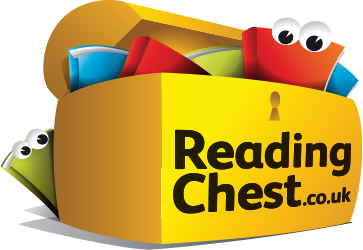Synthetic Phonics
The National Curriculum encourages schools to teach children to read using a synthetic phonics programme. This is based on evidence which shows that children learn to read quicker if they are taught letter sounds first which they can then blend together to form words.
Phonemes (sounds)
In short synthetic phonics teaches children the 44 phonemes (sounds) in the English language, linking letters or groups of letters with sounds.
It is important that when you help your child to sound out words, you focus on the phoneme rather than the individual letters which might only be part of a phoneme. For example, when reading the word, boat – it has 3 phonemes – b – oa – t. It would not make any sense at all to split up the ‘oa’ sound in the middle to be ‘o’ and ‘a’. Children can then use these letters and their corresponding sounds to read and spell words.
As your child progresses they learn that one phoneme can be represented by different letters, such as the sound in the middle of rain, which is represented as ‘ai’ can also be represented as ‘ay’ (play) and ‘a-e’ (tale).
What are phonics reading schemes?
Phonics reading books (otherwise known as decodable books) are written so that children can decode all the words using their phonic knowledge rather than using other clues or seeking help.
Some of the reading schemes for early readers offered by Reading Chest are phonics schemes and some are not.
Children learn to read phonics books by blending together phonemes. You might now be thinking – What’s new? – Are children not trying to sound out words in all reading books? Yes – but in other reading schemes they are encouraged to use other clues to predict the text as well such as following a repetitive pattern, looking at the pictures or thinking about what word would just make sense.
Each book in a phonics reading scheme contains words that the children can read using their knowledge of phonemes and letters so that they should make steady progress. So, once children have learned the letter or group of letters that make the sounds in words, they should be able to read all the words without making guesses or predictions based on other clues in the story such as the pictures or the pattern.
You might not notice the difference between phonics books and other reading books. All reading books use a phonics element, but books which are not in synthetic phonics schemes may also include some other ‘tricky words’ which cannot easily be sounded out. Children are taught to make sensible ‘guesses’ based on other clues such as the pattern of the story or the pictures.
Opinions about the best way to teach children to read are constantly changing and individual children learn to read in different ways.
What on earth?
Some of the language used to describe what happens in synthetic phonic teaching is really tricky.
Amazingly your child may well know and understand these terms...
- Blend (blending) this is when your child draws individual sounds together to pronounce a word, e.g. h-e-l-p, blended together, reads help
- Phoneme: the smallest single identifiable sound, e.g. the letters ‘sh’ represent just one sound, but ‘fl’ represents two (/f/ and /l/), There are 44 phonemes in the English language. Click here to hear how they sound.
- Grapheme: a letter or a group of letters representing one sound, e.g. sh, th, igh, ious.
- Digraph: is when two letters make one sound, e.g. sh, ch, th, ph.
- Vowel digraphs are two vowels which, together, make one sound, e.g. ie, oo, ai, ee
The National Curriculum encourages schools to teach children to read using a synthetic phonics programme. This is based on evidence which shows that children learn to read quicker if they are taught letter sounds first which they can then blend together to form words.
Phonemes (sounds)
In short synthetic phonics teaches children the 44 phonemes (sounds) in the English language, linking letters or groups of letters with sounds.
It is important that when you help your child to sound out words, you focus on the phoneme rather than the individual letters which might only be part of a phoneme. For example, when reading the word, boat – it has 3 phonemes – b – oa – t. It would not make any sense at all to split up the ‘oa’ sound in the middle to be ‘o’ and ‘a’. Children can then use these letters and their corresponding sounds to read and spell words.
As your child progresses they learn that one phoneme can be represented by different letters, such as the sound in the middle of rain, which is represented as ‘ai’ can also be represented as ‘ay’ (play) and ‘a-e’ (tale).
What are phonics reading schemes?
Phonics reading books (otherwise known as decodable books) are written so that children can decode all the words using their phonic knowledge rather than using other clues or seeking help.
Some of the reading schemes for early readers offered by Reading Chest are phonics schemes and some are not.
Children learn to read phonics books by blending together phonemes. You might now be thinking – What’s new? – Are children not trying to sound out words in all reading books? Yes – but in other reading schemes they are encouraged to use other clues to predict the text as well such as following a repetitive pattern, looking at the pictures or thinking about what word would just make sense.
Each book in a phonics reading scheme contains words that the children can read using their knowledge of phonemes and letters so that they should make steady progress. So, once children have learned the letter or group of letters that make the sounds in words, they should be able to read all the words without making guesses or predictions based on other clues in the story such as the pictures or the pattern.
You might not notice the difference between phonics books and other reading books. All reading books use a phonics element, but books which are not in synthetic phonics schemes may also include some other ‘tricky words’ which cannot easily be sounded out. Children are taught to make sensible ‘guesses’ based on other clues such as the pattern of the story or the pictures.
Opinions about the best way to teach children to read are constantly changing and individual children learn to read in different ways.
What on earth?
Some of the language used to describe what happens in synthetic phonic teaching is really tricky.
Amazingly your child may well know and understand these terms...
- Blend (blending) this is when your child draws individual sounds together to pronounce a word, e.g. h-e-l-p, blended together, reads help
- Phoneme: the smallest single identifiable sound, e.g. the letters ‘sh’ represent just one sound, but ‘fl’ represents two (/f/ and /l/), There are 44 phonemes in the English language. Click here to hear how they sound.
- Grapheme: a letter or a group of letters representing one sound, e.g. sh, th, igh, ious.
- Digraph: is when two letters make one sound, e.g. sh, ch, th, ph.
- Vowel digraphs are two vowels which, together, make one sound, e.g. ie, oo, ai, ee


